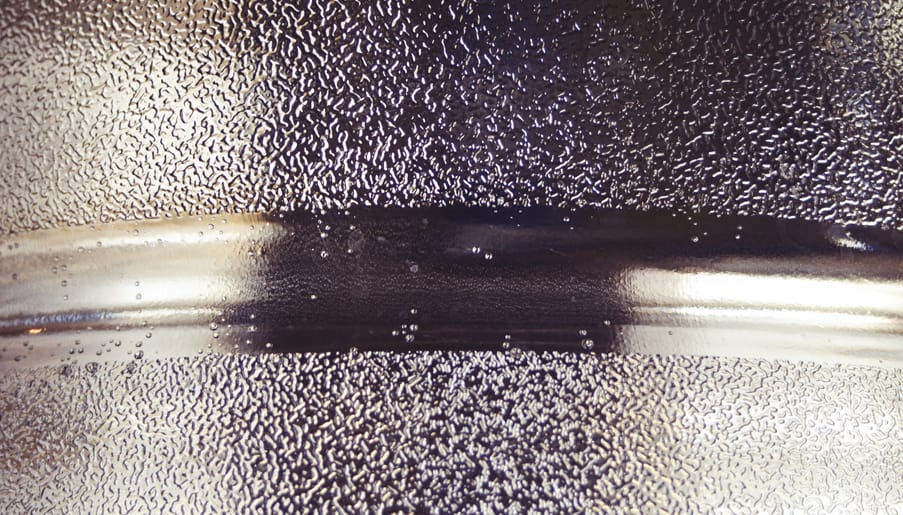The importance of tribological analysis for cost-saving
The expert’s view: by Amaya Igartua, Head of the Tribology Unit at IK4-TEKNIKER

An opportunity to save costs
It is calculated that 30% of the world’s energy consumption is wasted in the form of friction-induced heat. Moreover, half of all manufactured parts are made solely to replace others that have deteriorated due to wear and tear.
Faced with these figures, no-one can dispute that being able to monitor friction and wear – the two “culprits” – properly can have a huge financial impact. Tribology is an area of surface engineering that deals precisely with the study of these two phenomena and all things associated with them.
Proper attention to tribological problems could have saved €13.2 billion in Spain alone in 2014, i.e. the equivalent of 1.4% of the country’s GDP.
Tribology is one of those things that permeate and condition the day-to-day actions of absolutely everyone everywhere in the world, but for the public at large it is quite unknown.
For example a conventional vehicle has around 2000 tribological contacts, i.e. 2000 opportunities for its designers to offer users cost savings by bringing down fuel consumption or reducing the need to replace worn parts.
A host of everyday examples spring to mind with no need to resort to such complex systems: shoes with fast-wearing soles, knives that soon go blunt, irons that will not slide easily over clothes, slippery (and unsafe) floorings, sliding doors that jam, etc. All these systems can be improved by factoring tribology into their design stages.
Only those who are truly aware of the importance of taking account of and monitoring the tribological performance of systems exposed to friction and/or mechanical or chemical wear (corrosion) can stand out over the rest as both manufacturers and users.
It is never too late to think about tribological design: it can be applied not just in the process of creating a new product but also as a way of optimising existing products.
What options are there?
Apart from conducting basic research into the origins of friction and wear, tribology also seeks to find ways of mitigating their negative effects.
In 99% of cases the goal is to prevent wear and either reduce or increase friction. In these – and indeed the remaining 1% of cases – there are various working scenarios:
Materials: Selecting the right materials is the basis of good tribological design. Two materials in contact may have suitable mechanical properties but be tribologically incompatible, e.g. if they stick to each other: this can speed up various types of wear.
Surface treatment: The performance of materials sometimes needs to be enhanced by resorting to surface treatment, e.g. heat, treatment, chemical treatment, filler materials, etc. There is an almost endless range of options available, and the most suitable will depend on the use to which each mechanical system is to be put.
Lubrication: This is the most common way of attempting to reduce friction between two surfaces in contact that move relative to one another. Lubrication is a vast field, covering issues that range from selecting the right lubricant (oil, grease, solid lubricants) for a particular application to designing lubrication systems.
Mechanical design: Even the best materials and lubricants are of little or no help if the mechanical design of a moving system is not right.
It may seem that the matters discussed here are relatively simple and approachable for everyone, but in fact the underlying complexity of friction and wear is such that a great many studies are currently attempting to resolve the problems associated with them. Matters are complicated still further when there is more than one phenomenon involved, e.g. when the contributions of mechanical wear and chemical wear (corrosion) and the synergy between them must be determined.
Contacts between two surfaces that move relative to each other involve a great many factors whose ultimate effects are often hard to predict. In this area of surface engineering experimentation is therefore a vital part of the process of designing or optimizing a product.
The experience of IK4-TEKNIKER
The IK4-TEKNIKER technology centre is an international benchmark for tribological studies. It has unit that has been specialising in this field for 33 years, staffed by a highly-experienced team of 17 researchers.
The centre has taken part in more than 120 European, national and regional tribology projects, has been the Spanish representative in various international associations and working groups (Virtual Tribology Institute, Tribology COST 516, Eureka Network E?-Eniwep on wear prevention, E?-Surf on surfaces, WearCheck, etc.) and has organised specialist international congresses on the topic (IBERTRIB and LUBMAT). It is therefore a collaborator with a broad vision and ample experience in the field of tribology.
It has a fully-equipped laboratory capable of staging tests to simulate wear mechanisms in processes and components of many types under a wide range of working conditions, and can perform both standard tests and tests under special conditions requested by customers.
IK4-TEKNIKER offers multi-disciplinary support to customers for tribological design, with a view to improving the performance of any static or dynamic mechanical system that is exposed to friction or wear.
This means that we can work with customers in various scenarios: at the design stage of new products and processes, in the optimisation of existing products and processes (new requirements, upgrades, etc.) and in tackling friction and wear-related problems that may arise once a system is in service.
